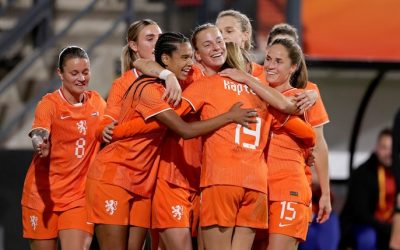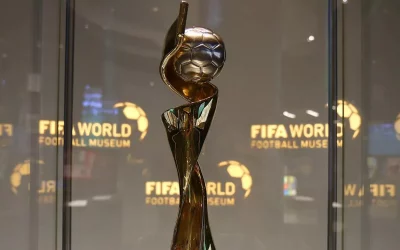When two-time European champion Lucy Bronze of Chelsea FC stated in an interview with Sky News that „99.9% of women’s players must think about life after football“, she wasn’t exaggerating. Despite the sport’s unprecedented growth in popularity, visibility, and professionalism, most female footballers still cannot rely on their earnings alone to secure their future. Unlike many of their male counterparts, female players are often compelled to pursue parallel careers, further education, or future-proof plans even while still playing. For most of them, the career after the career isn’t optional, it’s essential.
This article explores the evolving realities of post-career trajectories in women’s football. These range from dual career models and personal brand building to leadership in sports governance and complete professional reinvention.
From Part-Time Pros to Full-Time Uncertainty: A Brief Historical Backdrop
‚Equal pay‘ has been a highly discussed expression in women’s football in recent years. While many find it to be a comparison to the high-earning players in men’s football, it initially comes to female players wanting to be able to earn a sufficient living from their incomes from their professional career.
Just a few years ago, even players competing at the top level of women’s football often held part-time jobs to supplement their income. Contracts were short-term, benefits limited, and in some cases – especially during pregnancy – players were left without support. This also resulted in less time to train with the team or regenerate after training or matches. Players trained in a less-professional environment where the full focus couldn’t be on the footballing career. However, the landscape is shifting. Fully professional leagues like the National Women’s Soccer League (USA) and Women’s Super League (England) have now implemented landmark protections, including maternity benefits and contract security. Yet, in many leagues and clubs, earning enough money for a living in the first national league is still not possible.
While many players today can make a living wage in top leagues, financial independence for life remains elusive. A 2024 study by Peter Ehnold et al. revealed that at the time of the study less than 20% of female players in Germany’s top two leagues earn more than €1,000 per month. Compare that to the average salary in Germany’s third-tier men’s league, €10,000 per month, and the disparity becomes undeniable regarding future-proof finances.
Planning Ahead: The Rise of the Dual Career Model
The lifespan of an athletic career is short and fragile, often derailed by injury, pregnancy, or other unpredictable factors. Thus, many players are investing in what’s known as the dual career model. The idea is to combine elite sport with academic or vocational education to “have something to fall back on“ after the sporting career. Education isn’t just a passion project, it’s a crucial safety net for the future. This is not a women’s football-only issue but general to women’s sport.
However, the Dual Career Model brings with it a handful of challenges including the necessity of having suitable support systems (from the club, university, family, etc.) to guarantee a smooth addition to the professional career. On the one hand, a 2025 study on Italian footballers by Falvia Guidotti et al. found that players reported greater support from clubs (e.g., flexible training schedules) than from universities, which often showed limited understanding or flexibility toward the demands of an elite athlete. On the other hand, a different study indicates that when the symbiosis works out that playing football besides studying can indeed have a positive impact on their academic performance. Conversely, success in education helped reduce stress and pressure from football resulting in a mutual balancing act.
educational path during the career – and then?
As a result, it comes as no surprise that many players choose to follow an educational path during their sporting career. The earlier mentioned study by Ehnold et al. (2024) further found that hat 90.6% of female players in Germany’s top leagues are pursuing or have completed academic or vocational education. Additionally, many clubs and players’ unions are now committed to offer players benefits through their connections to prepare them for future careers.
Players’ approaches to navigating both career and women’s football have changed. In the past, professional players often had to follow a part-time job or educational path to earn enough money for a living in addition to their career. Today, they choose this option often to have secured or prepared for their career after the career.
“The biggest difference is as a player on the football pitch, you are well known and people give you the red-carpet treatment,” explains Bianca Rech, technical director in an UEFA interview. “This stops when you finish your career and you have to find the right place for yourself. You have to find out what your passion is outside of football, what interests you most and you also have to deal with not receiving the same amount of attention from people within the football industry and fans.”
What Comes After? Popular Career Pathways
As women’s football continues to professionalize, a wider array of post-retirement career options is emerging. A large majority remain involved in football or sport due to their experience and contacts in the industry. Many players transition into coaching, management, or media, driven by passion, expertise, and networks built during their playing careers.
- Clubs and associations:
- Coaching: With their learned expertise over the years as players, many find a position in the coaching staff to be the ideal next step. Prior professional experience often accelerates the licensing process.
- Notable examples include Bev Priestman (head coach Wellington Phoenix), Casey Stoney (Canada national team coach), Desiree Ellis (South Africa national team coach), Laura Harvey (head coach Seattle Reign FC), Martina Voss-Tecklenburg (former Germany national team coach), Sarina Wiegman (England national team coach) or Sonia Bompastor (head coach Chelsea FC Women)
- Club Management: Players who work in decisional and strategic processes apart from the pitch, choose a position in the management area.
- Famous examples include Bianca Rech (Sporting Director at FC Bayern Munich Women), Carly Telford (Commercial Manager Chelsea FC), Diana Matheson (CEO of Project 8 / Northern Super League) or Therese Sjögran (Sporting Director at Manchester City WFC)
- Football Governance: Former players who follow a professional career on executive-level for an association
- Famous examples include Beatriz Álvarez Mesa (President Liga F), Jill Ellis (Chief Football Officer of FIFA), Lise Klaveness (President Norwegian Football Federation) or Nadine Kessler (Head of Women’s Football at UEFA)
- Coaching: With their learned expertise over the years as players, many find a position in the coaching staff to be the ideal next step. Prior professional experience often accelerates the licensing process.
- Media: Other players use their expertise to contribute as analysts, commentators, or pundits to TV and/or sport streaming services in front of camera
- Big names such as Alex Scott (BBC, Sky Sports), Amanda Dlamini (Supersport), Heather O’Reilly (Fox Sports), Kara Lang (Sportsnet Central) or Karen Carney (BBC, The Guardian) have transitioned into broadcast roles, providing expert commentary and representation.
- Media Projects & Branding: A career path that has emerged in recent years is using social media as a platform to build a personal branding allowing sponsorship deals or brand collaborations
- Swiss international Alisha Lehmann is the most-followed women’s football star on Instagram with currently 16.4 million followers on which she can build on after her career.
- US stars Christen Press and Tobin Heath launched their own podcast format ‚The RE-CAP Show‘
- NGO & Advocacy Work:
- Eniola Aluko (Investor & Advisor Mercury 13), (Alex Morgan (Alex Morgan Foundation, also invests in broader women’s sports initiatives)
- Creative & Fashion: Through brands or own marketing, players create own fashion labels and brand or integrate hobbies like photography into their daily life as professional athlets (Christen Press and Tobin Heath with re-inc, Laura Freigang from Eintracht Frankfurt Women with Pictogang)
- Health: switching to jobs like physiotherapist, sport psychologist , etc.
- Switching Fields: Others pivot toward entirely different industries, using their education, personal interests, and public profiles to carve new paths.
However, challenges persist. While many players choose to stay within the football industry post-retirement, opportunities are still limited compared to their male counterparts. This is mainly due to gender inequality, and a lack of support or limited roles in management. There are relatively few positions compared to the number of players who retire annually.

Why Players Plan Early
Injury risks, financial insecurity, and short contract lengths mean that players must begin preparing for “life after football” far earlier than many male athletes.
The Australian A-League Women offers a stark example: in December 2024, star player Beattie Goad retired prematurely, calling the league’s part-time structure “unsustainable” for long-term career planning.
Studies back this up: research by Rebecca Andersson & Natalie Barker-Ruchti (2018) found high dropout rates for Swedish women players between ages 17–20, often due to the pressure of balancing education and sport with limited financial return.
A Glimpse into the Future: Trends and Takeaways
As women’s football continues its trajectory toward full professionalisation, the range of viable post-retirement careers is expanding. Clubs and associations are beginning to offer mentorship programs, educational support, and career transition coaching, while the demand for women in football/sports is increasing. But players still need more systematic support.
Social media has also become a powerful tool, with many players using their platforms to transition into brand partnerships, activism, or entrepreneurship.
We’re also witnessing the first generation of women footballers who can live off their football income alone, a milestone that brings not just financial stability, but a chance to raise new standards in professionalism for those who follow.
Multiple Paths, One Shared Reality
Today’s female footballers are more than athletes. They are students, leaders, media personalities, advocates, and entrepreneurs. While the pathways after retirement are more diverse and dynamic than ever before with more women taking on leadership roles, one reality remains unchanged. Navigating life after football requires foresight, flexibility, and often, a Plan B.
As the sport grows, so too does the responsibility to support players, not only just while the stadium lights shine, but long after the final whistle blows.
Text: Adriana Wehrens



